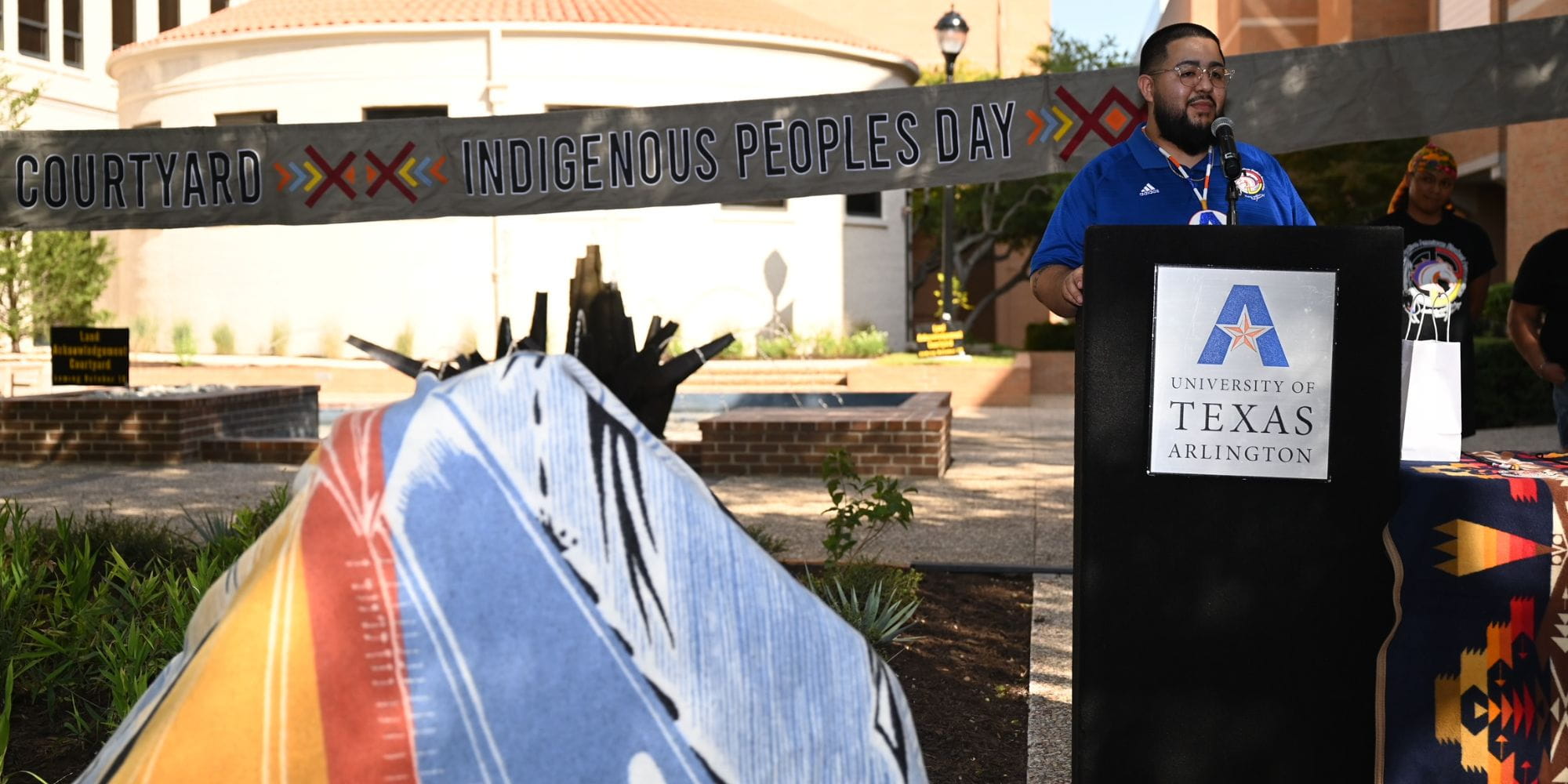
The University of Texas at Arlington celebrated Indigenous Peoples' Day with the dedication of a monument and a Native American Land Acknowledgment courtyard designed by students.
Members and past presidents of UTA's Native American Student Association unveiled a bronze plaque resting on a two-ton granite boulder in the newly designated courtyard. The plaque reads:
"UT Arlington respectfully acknowledges the Wichita and Affiliated Tribes upon whose historical homelands this university is located. Their ancestors resided here for generations before being forcibly displaced by U.S. settlers and soldiers in the mid-1800s. We recognize the historical presence of the Caddo Nation and other Tribal Nations in the region; the ongoing presence and achievements of many people who moved to the area due to the Indian Relocation program of the 1950s and 1960s; and the vital presence and accomplishments of our Native students, alumni, faculty, and staff. This Roundhouse Planetarium and Commemorative Site are dedicated to the first people on this land to look up at the stars and to those who continue their legacy."

Les D. Riding-In, assistant dean and director of graduate programs for the College of Liberal Arts and faculty advisor to the Native American Student Association, thanked the UTA community for its advocacy for Native and Indigenous students.
"We are lucky to be here at UT Arlington; it is truly a special place," Riding-In said. "Our Native and Indigenous pathways at UTA lead to the highway, a highway where there are few obstructions and multiple opportunities."
The commemorative boulder stands near the west entrance of the courtyard, which includes a fountain, seating area and garden.
David Hopman, landscape architect and associate professor in the College of Architecture, Planning and Public Affairs, led a cohort of students through the design process for the courtyard. To prepare, he and his students studied literature on Native American uses of plants and indigenous placemaking, visited the First Americans Museum in Oklahoma City and met with members of nations from Texas and Oklahoma.
Plants featured in the garden are native to North Texas and were historically used by the regions' nations for practical and ceremonial uses. The switch grass that lines the path near the planetarium wall was used as roofing material for summer and winter shelters. Other featured plants were used for medicine and food, Hopman said.
UTA President Jennifer Cowley congratulated UTA's Native American community members and supporters whose efforts brought the landmark to fruition.
"We honor the Wichita and Caddo and other Native nations who inhabited this land in Arlington for generations," Cowley said. "I hope that this space will bring people together and create a connection for them to the important history of this land."
In a brief speech, Jim Ross, mayor of the city of Arlington, declared Oct. 10 Indigenous Peoples' Day.
"In today's world there is a lot of divisiveness, but this event gives me hope," Ross said. "The young adults and students at UTA understand that we are stronger together than apart. They know that diversity is not a hurdle to overcome; it's our strength."
UTA's support of the Native American community has earned recognition nationally. For five years in a row, UTA has been listed among the nation's best universities for Native American, Alaska Native and Native Hawaiian students by Winds of Change, a publication that evaluates and ranks the top universities with strong Native American communities and academic support systems in place for student success.
In addition, UTA's Native American Student Association is the longest continuously running native student group in Texas and supports Native American interests with its annual scholarship benefit powwows.
Stephen Silva Brave, vice president of the Native American Student Association, said the landmark raises the visibility of the Native American community on campus.
"I don't feel invisible here at UTA," Brave said. "Now there's a spot on campus that everyone knows about. We have our spot and that's important."






